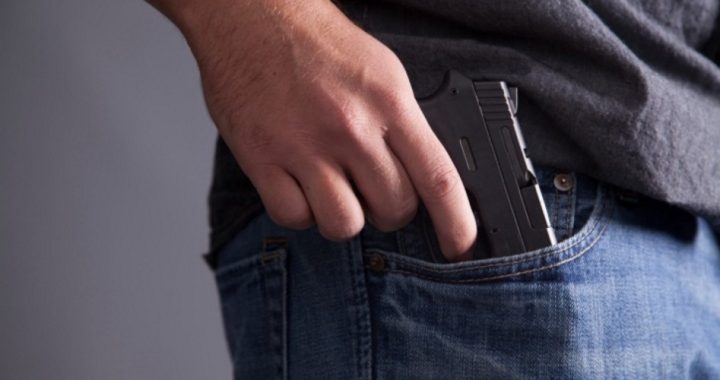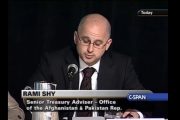
Jim Irvine, chairman of the Buckeye Firearms Association in Columbus, Ohio, expressed confidence that Ohio will shortly join the growing number of states allowing concealed carry permit holders (CCW for concealed-carry-weapon) on school grounds and campuses around the country. Following tragic shootings at Virginia Tech, Columbine High School, and Sandy Hook, legislators have been conflicted as to the best way to protect students from deranged criminals seeking instant fame through high body counts in their armed attacks on innocents. The momentum appears to be shifting toward common sense. Allowing permit holders in churches, day-care centers, and schools, according to Irvine, “[is] not only a good idea, it’s a mandatory thing if you want the kids to be safe. I think, in time, it’s going to be required.”
Ohio legislators aren’t the only ones taking a second look, by any means. In Arkansas lawmakers approved a measure allowing churches that operate K-12 schools to permit CCW holders on campus, as well as onto other church property and places of worship. Oklahoma now allows private schools to let CCW licensees carry onto school grounds while Alabama just passed a law authorizing counties to form voluntary armed security forces made up of current and retired school employees.
Kansas school districts allow employees with CCW permits onto school grounds while Tennessee has greatly softened its previous ban on those with permits to carry.
South Dakota and Texas have gone a step further, creating “sentinel” and “marshal” programs that provide intensive training for volunteer teachers to become the front line of defense against a criminal attack.
Utah has one of the freest, most liberal laws concerning the keeping and bearing of firearms by its citizens in the country and, accordingly, all 10 public colleges in the state allow concealed carry on campus.
Overzealous educators in Colorado tried to ban concealed carry on campus, but in March 2012, the state’s highest court ruled that it violated the state’s concealed carry law.
Just last week Idaho’s senate passed overwhelmingly a bill allowing concealed carry on the state’s college campuses. The bill is headed to the state house where a similar measure easily passed last year. The governor has already promised to sign it into law when it hits his desk.
In 2013, legislators in 19 states introduced similar legislation, two of them passing. At the same time, legislators introduced legislation banning concealed carry on campuses, and none of them passed.
This subtle shift toward freedom and responsibility, on campus and off, has been going on for years, but it is just now surfacing to the point where the national media have been forced to acknowledge it. John Lott, the author of More Guns, Less Crime — first published in 1998 and now in its third printing — was asked recently how society can prevent, or at least greatly discourage, such mass shootings in the future. The nuggets and kernels of truth in his response have finally been getting traction:
About 75 percent of the time when these attacks occur, the killers themselves die at the scene. Even the times when they don’t die, it seems pretty clear their intent was to die, but they just couldn’t bring themselves to commit suicide, pull the trigger, and shoot themselves at the last moment.
But in their warped mind, what they want to do is commit suicide in a way that will get them attention, so people know who they were when they were here. It’s a pretty sick idea, but if you read the documents that they leave, the diaries and the video tapes, it is pretty clear that these guys know that they get more attention the more people they can kill.
So their goal is to try to kill as many people as possible. So there are two issues here. One is focusing on the attention. And I think it’s pretty clear that … if people stopped mentioning their names — I’m not saying that’s possible — that’s one thing that would reduce their incentive to go and commit these crimes.
The second thing is to give people the option to protect themselves.
It’s worth mentioning that people already have the right to protect themselves. It isn’t something that governments give out like candy. Rather it’s that politicians with agendas have trampled that right by passing unconstitutional and illegal laws.
Lott then expanded on what happened in Aurora, Colorado:
One of the things I’ve written about recently is the attack at the Aurora, Colorado movie theater. There, you have seven movie theaters that were showing the Batman movie when it opened at the end of July [2012].
Out of those seven movie theaters, only one movie theater was posted as banning permit-concealed handguns. The killer didn’t go to the movie theater that was closest to his home. He didn’t go to the movie theater that was the largest movie theater in Colorado, which was essentially the same distance from his apartment as the one he ended up going to. Instead, the one he picked was the only one of those movie theaters that banned people taking permit-concealed handguns into that theater.
The effect of creating “gun free” zones, said Lott, is that “criminal safe” zones are created instead:
When you ban guns, rather than making it safer for the victims, you unintentionally make it safer for the criminals, because they have less to worry about. If you had a violent criminal stalking you or your family, and was really seriously threatening you, would you feel safer putting a sign up in front of your home stating, “This home is a gun-free zone”?
For years Guy Smith has published and continued to revise his Gun Facts, which is now in its sixth iteration. It’s been a labor of love, as he has not been funded in any substantial manner, except with occasional donations. In the chapter entitled “Children and Guns,” Smith blows up myth after myth mindlessly and endlessly repeated by the anti-gun interests and media. Below are two such myths that have gained purchase in the current debate.
Myth: 13 children are killed each day by guns
Fact: 301 children (age 14 and under) died from gunfire in all of 2010 — less than one per day.
Myth: School yard shootings are an epidemic.
Fact: Over an eight-year period, in states without “right to carry” laws, there were 15 school shootings; however, in states that allow citizens to carry guns, there was only one. [Sources provided in his footnotes.]
It is no doubt gratifying to those in the freedom fight such as Lott and Smith to see that their years-long efforts are finally beginning to bear fruit. As the momentum continues to shift toward common sense in the long war against guns, one may reasonably also expect to see continuing declines in the rates of violent crime, and hopefully a diminishing of cries for more restrictions on gun ownership.
A graduate of Cornell University and a former investment advisor, Bob is a regular contributor to The New American magazine and blogs frequently at www.LightFromTheRight.com, primarily on economics and politics. He can be reached at [email protected].



